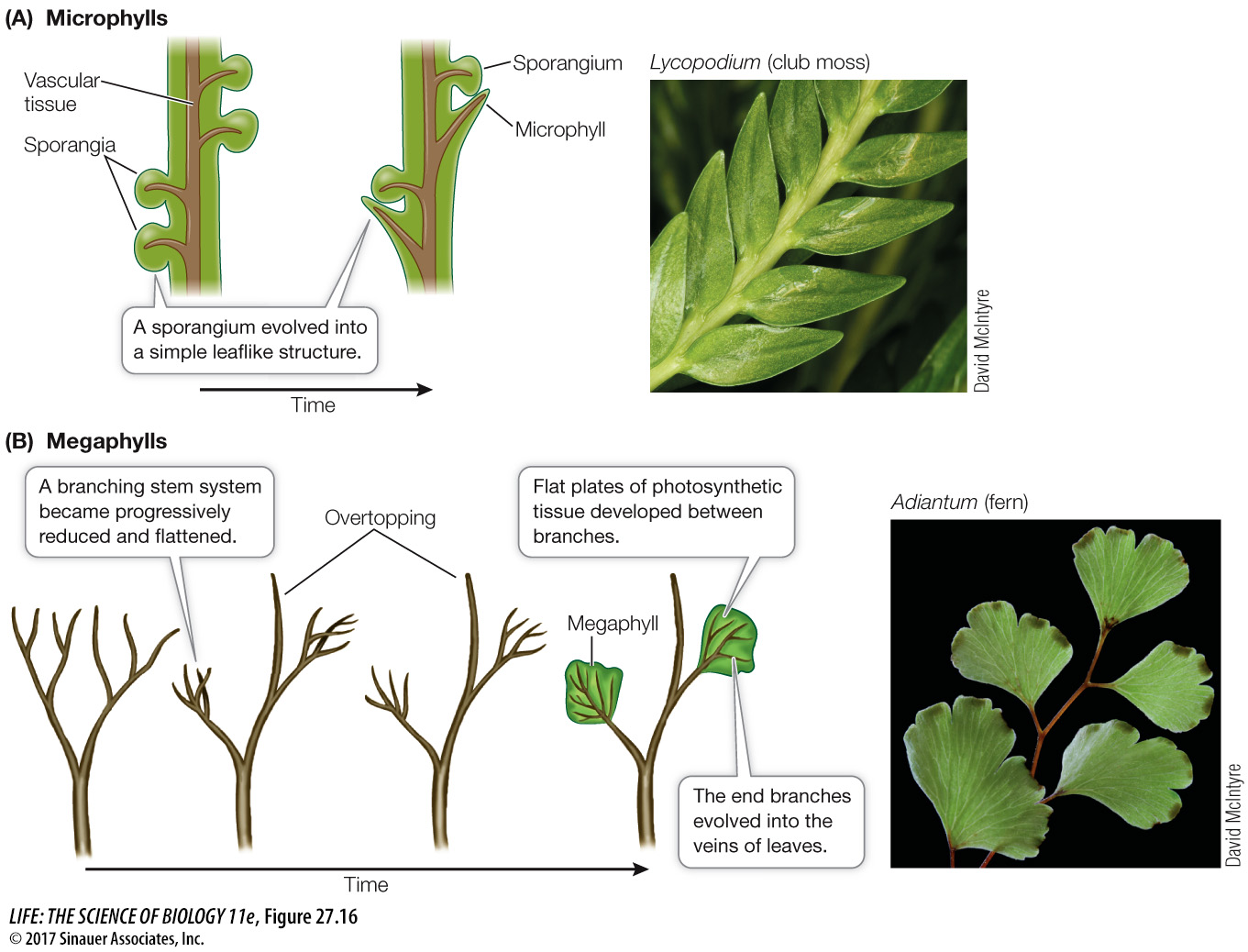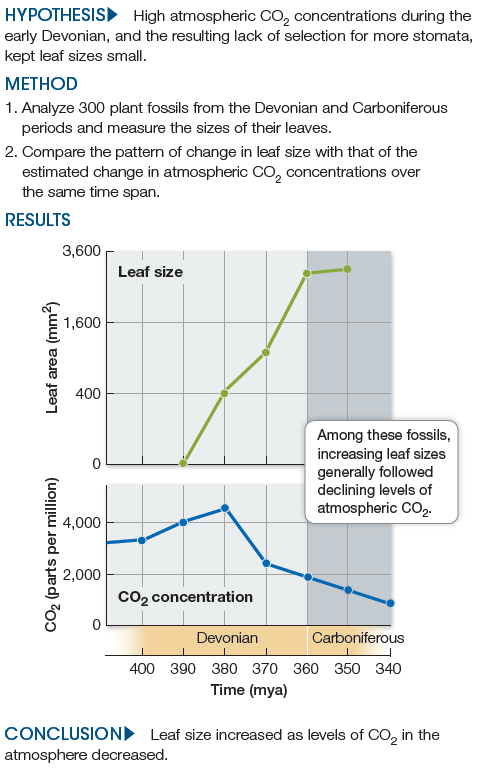The vascular plants branched out
Several features that were new to the vascular plants evolved in lycophytes and monilophytes. Roots probably had their evolutionary origins as branches, either of a rhizome or of the aboveground portion of a stem. These branches presumably penetrated the soil and branched further. The underground portions could anchor the plant firmly, and even in this primitive condition, they could absorb water and minerals.
The microphylls of lycophytes were probably the first leaflike structures to evolve among the vascular plants. Microphylls are usually small and only rarely have more than a single vascular strand, at least in existing species. Some biologists believe that microphylls had their evolutionary origins as sterile sporangia (Figure 27.16A). A typical feature of this type of leaf is a vascular strand that departs from the vascular system of the stem in such a way that the structure of the stem’s vascular system is scarcely disturbed. This pattern was evident even in the lycophyte trees of the Carboniferous period, many of which had microphylls many centimeters long.

The monilophytes and seed plants constitute a clade called the euphyllophytes (eu, “true,” + phyllon, “leaf”). An important synapomorphy of the euphyllophytes is overtopping, a growth pattern in which one branch differentiates from and grows beyond the others (Figure 27.16B). Overtopping would have given these plants an advantage in the competition for light, enabling them to shade their dichotomously branching competitors. The overtopping growth of the euphyllophytes also allowed a new type of leaflike structure to evolve. This larger, more complex leaf is called a megaphyll. The megaphyll is thought to have arisen from the flattening of a portion of a branching stem system that exhibited overtopping growth. This change was followed by the development of photosynthetic tissue between the members of overtopped groups of branches, which had the advantage of increasing the photosynthetic surface area of those branches.
The first megaphylls, which were very small, appeared in the Devonian period. We might expect that evolution should have led swiftly to the appearance of more and larger megaphylls because of their greater photosynthetic capacity. However, it took some 50 million years, until the Carboniferous period, for large megaphylls to become common. Why should this have been so, especially given that other advances in plant structure were taking place during that time?
According to one theory, the high concentration of CO2 in the atmosphere during the Devonian period reduced selection for the *stomata that allow a leaf to take up CO2 for use in photosynthesis. With more CO2 available, fewer stomata were needed. In the Devonian, larger leaves with a limited number of stomata would have absorbed heat from sunlight, but they would have been unable to lose heat fast enough by evaporation of water through their stomata. The resulting overheating would have been lethal. Recent research has supported this hypothesis, indicating that larger megaphylls evolved only as CO2 concentrations dropped over millions of years (Figure 27.17).
*connect the concepts As explained in Key Concept 35.3, stomata are pores in the epidermis of plants that open and close to regulate uptake of CO2 into the plant and guard against excessive diffusion of water out of the plant. Various environmental factors trigger the opening and closing of the stomata, including light, the CO2 level in photosynthetic cells of the plant, and water availability.
experiment
Figure 27.17 Atmospheric CO2 Concentrations and the Evolution of Megaphylls
Original Paper: Osborne, C. P., D. J. Beerling, B. H. Lomax and W. G. Chaloner. 2004. Biophysical constraints on the origin of leaves inferred from the fossil record. Proceedings of the National Academy of Sciences USA 101: 10360–
High concentrations of atmospheric CO2 during the first part of the Devonian may have limited the evolution of leaf size. C. P. Osborne and colleagues compared the leaf sizes of fossil plants against estimates of CO2 concentrations in the atmosphere at the time the plants were alive.
